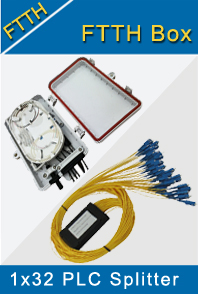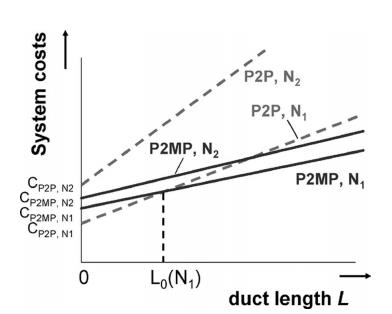-

- Sopto Home
-

- Special Topic
-

- FTTH Knowledge
-

- The importance of Economic considerations for Fiber Access Netwo
FTTH Knowledge
- Solving the FTTH Rollout Problem in Multiple Dwelling Units
- WDM PON Introduction FAQ
- A Simple Overview of Optical Power Meter
- ODN is based on PON FTTH Optical Cable Network of the Device
- Using an OTDR to be an Expert in Fiber Link Testing
- How FTTH Broadband Works?
- Connections among Fiber Terminal Boxes & Patch Cables & Pigtails
- Easy to Install a Fiber Terminal Box
- What is Arrayed Waveguide Grating?
SOPTO Special Topic
Certificate



Guarantee
Except products belongs to Bargain Shop section, all products are warranted by SOPTO only to purchasers for resale or for use in business or original equipment manufacturer, against defects in workmanship or materials under normal use (consumables, normal tear and wear excluded) for one year after date of purchase from SOPTO, unless otherwise stated...
Return Policies
Defective products will be accepted for exchange, at our discretion, within 14 days from receipt. Buyer might be requested to return the defective products to SOPTO for verification or authorized service location, as SOPTO designated, shipping costs prepaid. .....
Applications

Sopto supply the best FTTH solutions for your network!
SOPTO Products
- Fiber Optic Transceiver Module
- High Speed Cable
- Fiber Optical Cable
- Fiber Optical Patch Cords
- Splitter CWDM DWDM
- PON Solution
- FTTH Box ODF Closure
- PCI-E Network Card
- Network Cables
- Fiber Optical Adapter
- Fiber Optical Attenuator
- Fiber Media Converter
- PDH Multiplexers
- Protocol Converter
- Digital Video Multiplexer
- Fiber Optical Tools
- Compatible
Related Products
Performance Feature
FTTH Knowledge
Recommended

The importance of Economic considerations for Fiber Access Network Architectures
Besides technical performance, economic considerations play a key role in deciding for a particular architecture. The duct pattern may be the same for all three architectures (point to point, active star and passive star). However, in the point-to-point (P2P) architecture many fibers need to be installed throughout the network, whereas in the point-to-multipoint (P2MP) architectures (active and passive star ones) in the feeder part only one fiber is needed. The latter is advantageous as well when a complete feeder duct is destroyed by, e.g., a dragline machine: in the P2P architecture many fibers have to be identified and correctly reconnected, whereas in the P2MP architecture only a single fiber needs to be repaired.
In the P2P architecture, for each home two optical line terminations are needed: one at the customer, and one in the exchange. In the P2MP architecture, in the exchange only a single termination is needed; however, the line terminations will be more expensive than the ones in the P2P architecture, as the sharing of the feeder fiber requires extra measures for avoiding traffic collisions. On the other hand, many customers share the costs of the line termination in the exchange.
Qualitatively, the comparison of the installation costs of a P2P architecture versus those of a P2MP architecture may look as shown in Figure2. With increasing geographical area to be covered (so with increasing duct length), the system costs of a fiber-rich P2P architecture will grow faster than those of a P2MP architecture. Due to the higher complexity, the costs for a P2MP optical line terminal will, however, be higher than those of a P2P terminal. When the number of customers increases, the system costs of the P2P architecture grow faster than those of the P2MP architecture, as more fibers and more line terminating modules (and thus more floor space in the exchange) are needed.
In the P2MP architecture, the costs rise slower as more fiber is needed only in the branches, and a bit more comprehensive (active or passive) splitter. Consequently, as shown in Figure2, there will be a certain duct length beyond which the installation costs of a P2MP architecture will be lower than those of a P2P architecture. This break-even duct length L0 will be larger when more customers need to be fed. Hence, when a relatively small access area is to be fed, a P2P architecture may be cheaper to install, whereas for larger areas a P2MP architecture may be preferred.

Figure2. Duct length and system cost
General trend of installation costs versus the exchange-to-customer duct length for P2P access network architectures and for P2MP architectures as well as for connecting N customers. (N2> N1) CP2P, N2 costs of line terminating equipment in a P2P architecture connecting N2 customers.
In the P2P architecture and the P2MP active star architecture, each fiber link is carrying a data stream between two electro-optic converters only and the traffic streams of the users are multiplexed electrically at these terminals. Therefore, there is no risk of collision of optical data streams. These point-to-point links are straightforward and can basically be realized with simple and cheap optical transceiver modules, which are readily available commercially.
In the P2MP passive star topology (the PON), however, the traffic multiplexing is done optically by merging the data streams at the passive optical power combiner. Collision of the individual data streams needs to be avoided by well-designed multiple access techniques. In the following section, several of these techniques for a PON will be discussed.
Related Knowledge:
Frame Installation and Acceptance Testing
FTTH Architecture PON versus P2P Ethernet
What is the technology makes FTTH broadband connections possible?



